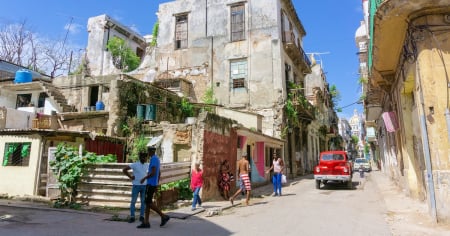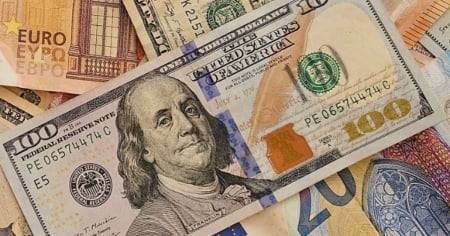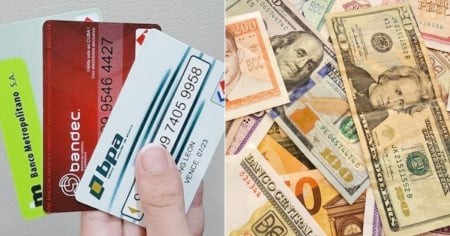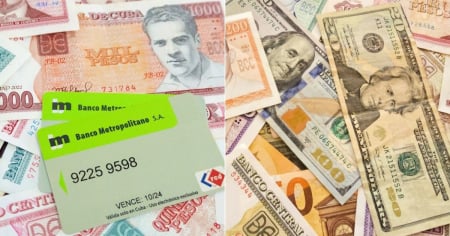The Freely Convertible Currency (MLC) continues to surprise in the Cuban informal market. It has risen in price again this Tuesday, consolidating a streak of increases that began on February 14.
At dawn on this 25th of February, the MLC is averaging 280 CUP in Cuba, five pesos more compared to the previous day, according to the daily report from the independent outlet elToque, which tracks the fluctuations in the value of currencies in informal buying and selling.
Will the dollar make a comeback?
Although the dollar is still pegged at 340 CUP, the median value over the last 24 hours shows an increase to 342 CUP for the sale of the U.S. currency, which could indicate that a price rise is on the horizon.

The median of the MLC is quoted for sale at 287 CUP, which also suggests that the virtual currency will remain active in the coming hours.
In the case of the euro, it's the same; the European currency remains pegged at 345 CUP.
Exchange Rate Evolution
Exchange rate today, 02/25/2025 - 10:43 a.m. in Cuba:
Exchange rate of the dollar USD to CUP according to elTOQUE: 340 CUP.
Exchange rate of the euro EUR to CUP according to elTOQUE: 345 CUP.
Tasa de cambio del MLC to CUP according to elTOQUE: 280 CUP.
Why has the price of the freely convertible currency increased in recent days?
The virtual currency that the regime operates with in some stores, and which some believe is doomed to disappear, has risen by a total of 35 pesos since February 14.
The recent appreciation of the Free Convertibility Currency (MLC) in Cuba has surprised both citizens and the economic sector. The paradox lies in the fact that, despite the decrease in stores accepting this currency, its value has risen, contradicting typical expectations in a low-demand scenario.
According to the economist Pavel Vidal, in statements to elToque, this increase could be merely a "temporary correction" following the significant drop in its value at the beginning of the year.
From the Observatory of Coins and Finance of Cuba (OMFi), Vidal explained that these adjustments are normal after sharp movements in the exchange rates. Furthermore, the rigidity of prices in a market affected by scarcity encourages arbitrage operations, which could temporarily boost the demand for MLC.
On social media, some users have suggested other reasons behind this phenomenon. The scarcity of products in state stores that accept MLC could be a key factor. One user pointed out that certain items purchased in MLC and resold in Cuban pesos at the current exchange rate generate substantial profits.
Cigars have been identified as a key product in this context. Their low price elasticity of demand ensures that smokers continue to purchase them, regardless of cost. Some users claim that profits can double the original value of products bought in MLC.
Other goods such as eggs, yogurts, sausages, detergents, or soap are also driving the increasing demand for this currency, due to the advantages of reselling them in Cuban pesos with significant profit margins.
Despite the recent spike, Vidal believes that these fluctuations do not change the downward trend that the MLC has shown in the informal market over the past two years.
At the same time, the Cuban regime continues to move towards a partial dollarization of sales, opening stores that only accept payments in cash or through cards like VISA, MasterCard, and Clásica, the latter managed by the government itself.
Frequently Asked Questions about the Black Market for Foreign Currency in Cuba
Why has the price of the freely convertible currency (MLC) risen in Cuba?
The increase in the price of the MLC is due to a series of factors, including the scarcity of products in stores that accept this currency and business opportunities in the informal market. This phenomenon generates arbitrage, where certain products purchased in MLC are resold in Cuban pesos with significant profit margins. Furthermore, economists like Pavel Vidal suggest that the increase could be a temporary correction following a previous drop in the value of the MLC.
What is the current exchange rate of the dollar, euro, and MLC in the Cuban informal market?
Currently, the dollar is priced at 340 CUP, the euro at 345 CUP, and the MLC at 280 CUP in the Cuban informal market. These figures are monitored by the independent media outlet elToque, which closely follows the fluctuations of these currencies in the country.
How does partial dollarization affect the MLC and its future in Cuba?
Partial dollarization in Cuba is reducing the areas where MLC is accepted, which could affect its future viability. Although the Cuban regime has denied that stores in MLC will disappear, the shift towards a more dollarized economy, with cash payments and international cards, suggests that MLC might be losing relevance in the current economic context.
What products are driving the demand for MLC in the informal Cuban market?
Products such as cigarettes, eggs, yogurts, sausages, detergent, and soap are driving the demand for MLC in the Cuban informal market. These goods, being cheaper in stores that accept MLC, are resold in Cuban pesos with significant profits, which encourages the pursuit of this currency in the black market.
Filed under:





